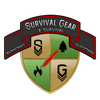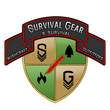Bushcraft Skills - How to Start a Fire From Scratch

A fire is a survivalist’s protector. Capable of providing heat, light, and shelter, knowing how to start a fire can greatly increase your chances of survival. Not only that, it’s a general life skill that can be used outside of the wilderness. If you want to increase your bushcraft skills, it may be time to see if you’re up to starting a fire from scratch. Whether you’re a beginner or an advanced survivalist, here’s an official guide to start fires when you don’t have access to a lighter or match.
Before You Start
Before you try to start a fire from the beginning, it’s important to understand the process that leads up to it. For example, there are two main types of fire sources: urban, primary fire starters and survival sources. Primary fire starters refer to man made tools like matches and lighters. If you’re still a beginner, this is the best place to start.
More advanced survivalists may challenge themselves with the second option. Even so, beginners should start teaching themselves how to create a fire from scratch the moment they master fire starting with matches. Sometimes, the wilderness doesn’t give you a choice. In an emergency situation, knowing how to start a fire with your bare hands may save your life.
Flame Sources
Once you’ve decided how you’re going to start your fire, it’s time to narrow down your options. This will change depending on your materials, surroundings, and experience level. Generally speaking, starting a fire without matches or lighters will automatically make things more difficult.
Even so, a fire doesn’t have to be fancy, it just needs to be useful. When starting a fire from scratch, the goal is to generate enough heat to create a small coal or ember. Add tinder, and you’ve got yourself a fire!
Fire Starters
As mentioned previously, urban fire starters generally refer to lighters and matches. These do most of the work by producing a flame or coal for you. You’ll still need to gather materials to start the fire, but you won’t need to worry about producing a flame.
Sparks
As the name suggests, a flame is produced by projecting sparks, usually caused by colliding with another object. Creating fires out of sparks can be done with flint, rocks, and batteries paired with wool.
Friction
If you’ve ever had a rope burn, you’ve experienced the effects of friction. Friction occurs when heat is generated by the repetitive and precise movement of two objects rubbing against each other. To create a fire using friction, rub wood against each other using a hand drill, plow, or a bow.
Sun
Using sunlight to create a fire is a less reliable method, but it can work if you happen to be at the right place at the right time. Using the proper materials, you can concentrate the sunlight to cultivate enough heat to produce a flame.
Chemicals
If you’re attempting to create a fire with the least amount of urban tools necessary, you may not ever need chemicals. Even with traditional camping, chemicals are the least used source of fire because of safety hazards that come with handling the materials. If they were used, flames would be produced by mixing chemicals that combust upon interaction with one another.
Prep Order
Once you’ve decided how to produce the flame, the work begins. Generally speaking, building a fire will take up most of your time. With that in mind, try to plan your days accordingly based on weather conditions, the time of day, and temperature. When creating your fire from scratch, focus your efforts on setting it up over lighting the flame.
1. Tinder
Unfortunately, you won’t be able to create a fire from a large piece of firewood. It’s best to start off small and work your way up. To begin, start gathering bits of tinder. These should be dry, small pieces of material that help fuel your fire. If you’re on a bushcraft trip, you’ll need to rely on the resources around you. Natural tinder can include the following:
- Grass
- Leftover fibers (i.e. dryer lint in your pockets)
- Abandoned birds nests
- Small, fibrous bark
- Miscellaneous dry weeds
- Leftover rope
- Tiny, dead wood (preferably wood shavings)
2. Kindling
Kindling is the next phase of fire starting. Once you’ve gathered all your tinder, it’s time to begin searching for medium sized branches or twigs. Try to search for wood that’s dry and soft, no more than the size of a pencil. Use your knife to carve off the top layer of the branches. This will allow the fire to catch the dry, innermost part of the wood.
3. Wood
Contrary to popular belief, you shouldn’t resort to large pieces of wood immediately upon flame ignition. Start by slowly increasing the size of your kindling to branches that are just about the size of your forearm. From there, start making your up in wood size using an axe. If your fire is starting at a comfortable rate, continue adding bits of dry wood to keep it going.







Leave a comment